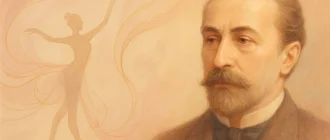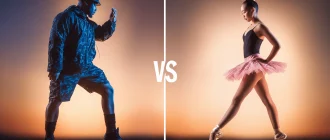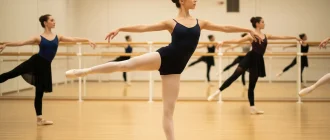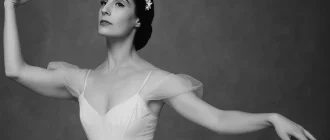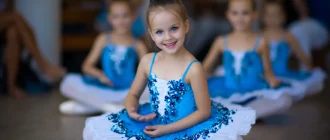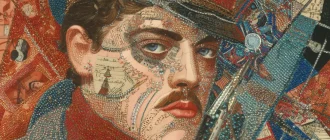A brief history of ballet reveals that it began in the 15th-century Italian Renaissance courts as a form of social dance. This fascinating topic explores how ballet began. It seems ballet began as entertainment during lavish parties and weddings before evolving into a structured art form. This article will detail ballet’s journey from its Italian roots to its growth in France, its refinement in Russia, and its global influence today.
Graceful Insights
- Ballet originated in the 15th-century Italian Renaissance courts as a social dance and, under the influence of dancing masters, evolved into a structured discipline.
- The transition of ballet from Italy to France, supported by figures such as Catherine de’ Medici and King Louis XIV, led to its formalization and establishment as a significant art form.
- The evolution of ballet in the 19th century, marked by Russian influence and iconic works like Swan Lake and The Nutcracker, shaped modern perceptions and practices in ballet.
Art de Podcast
| Period | Description | Key Figures | Location |
|---|---|---|---|
| Renaissance Era (15th-16th Century) | Ballet originated in the Italian Renaissance courts. It began as entertainment for aristocrats, combining music, dance, and spoken word. | Catherine de’ Medici | Italy, France |
| Court Ballet (16th-17th Century) | Introduced to France by Catherine de’ Medici, ballet developed into a court spectacle with elaborate costumes and scenery. The “Sun King, Louis XIV,” greatly influenced its refinement and formalization. | Louis XIV, Pierre Beauchamp | France |
| Establishment of Academies (1661) | Louis XIV founded the Académie Royale de Danse, formalizing ballet as an art form. This institution set the foundation for the codification of ballet technique. | Jean-Baptiste Lully, Pierre Beauchamp | France (Paris) |
| Romantic Ballet (Early 19th Century) | Romantic ballet, marked by mysticism and supernatural themes, introduced the ballerina as a central figure. The emphasis was on ethereal movements, pointe work, and long tutus. | Marie Taglioni, Filippo Taglioni | France, Italy |
| Classical Ballet (Late 19th Century) | Classical ballet emphasized narrative storytelling, technical precision, and spectacular choreography. This period saw the creation of many enduring works. | Marius Petipa, Lev Ivanov | Russia (St. Petersburg) |
| Ballets Russes (Early 20th Century) | This company, founded by Sergei Diaghilev, revolutionized ballet with its innovative choreography, music, and design. It introduced collaborations with contemporary artists and composers. | Sergei Diaghilev, Vaslav Nijinsky | France, Russia |
| Modern and Contemporary Ballet (Mid-20th Century to Present) | Ballet evolved with influences from modern dance, incorporating more expressive and abstract movements. Companies and choreographers continue to push boundaries, blending traditional and contemporary styles. | George Balanchine, Frederick Ashton | Global |
Key Points:
- Origins in Italy: Ballet began as a courtly entertainment in Italy, blending dance, music, and drama.
- Growth in France: Catherine de’ Medici introduced ballet to France, where it evolved into a more structured and codified art form under the patronage of Louis XIV.
- Development of Techniques: Pierre Beauchamp’s establishment of academies and codifying dance movements were crucial in defining ballet techniques.
- Romantic and Classical Eras: Romantic ballet highlighted expressive storytelling, while classical ballet focused on technical prowess and elaborate productions.
- Ballets Russes Influence: The early 20th-century company transformed ballet into a modern art form through experimental collaborations.
- Global Expansion: Ballet has since become an international phenomenon, with companies and schools worldwide exploring traditional and innovative styles.
Origins in the Italian Renaissance
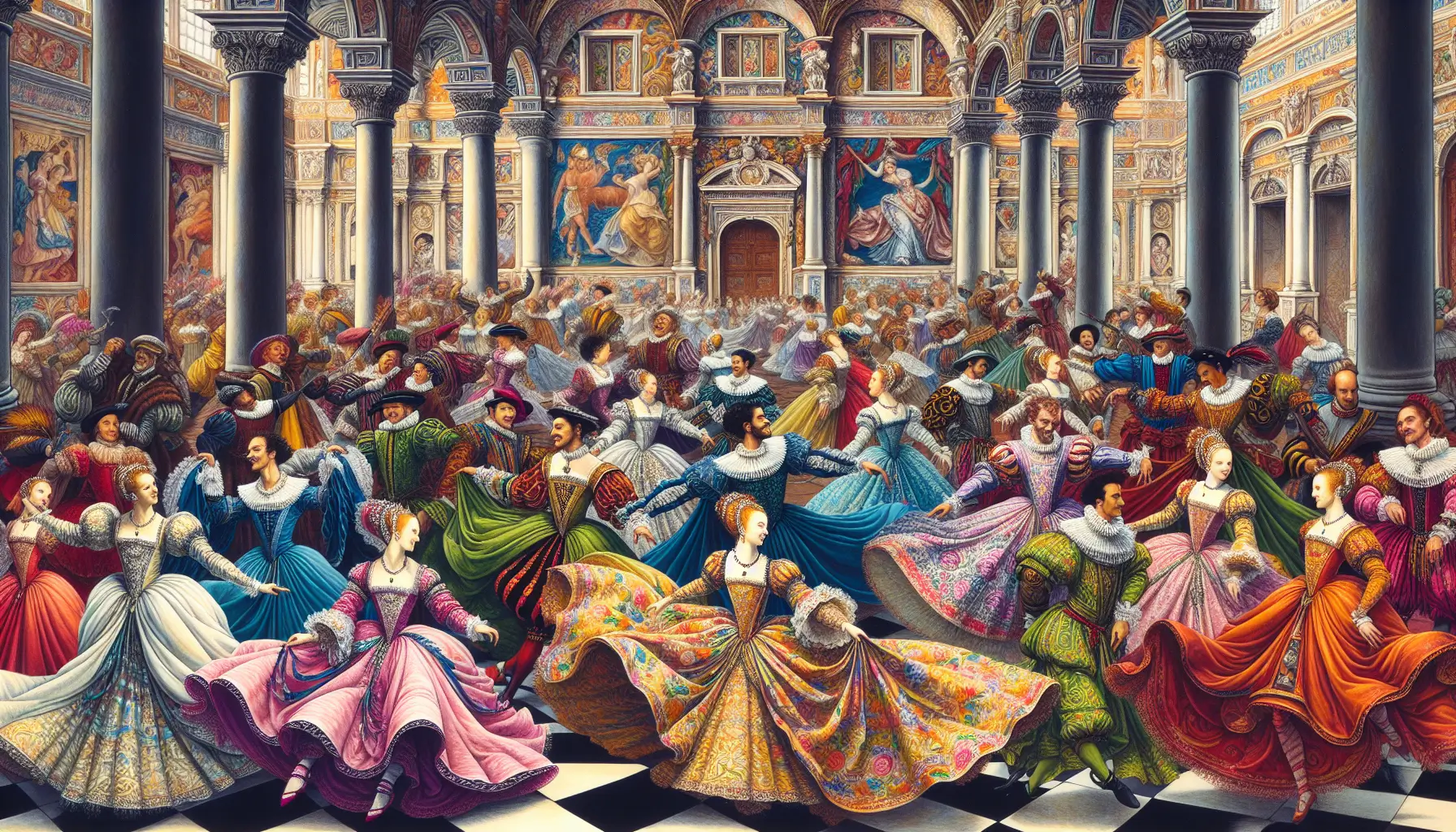
The origin of ballet can be traced back to the 15th-century Italian Renaissance courts, where it emerged from the elaborate festivities that marked significant social events. At that time, it was a social dance performed during lavish parties and wedding celebrations. These early performances were characterized by reserved movements and costumes resembling formal dress, designed more for visual splendor than freedom of movement.
As ballet evolved, costumes transitioned from elaborate 15th-century styles to functional designs that provided dancers with greater mobility. The Italian courts became the cradle of this emerging art form, setting the stage for its evolution into a structured discipline.
Early Court Dances
Early court dances in the 15th-century Italian Renaissance were central to social gatherings, particularly wedding celebrations. These dances provided entertainment and fostered social connections among the nobility.
These elaborate festivals encouraged performances that became central to the cultural fabric of court life.
Influence of Dancing Masters
Dancing masters were pivotal in shaping the history of ballet, teaching and refining the dance styles popular in the Italian courts. These dancing masters, such as Domenico da Piacenza, taught and laid the groundwork for future dance forms by incorporating ballet elements into their teachings and performances.
Their teachings transformed court dances into a more structured and sophisticated art form.
Evolution in France
The evolution of ballet took a significant turn when it spread from Italy to France, influenced by key figures like Catherine de’ Medici and King Louis XIV. Catherine de’ Medici, an Italian aristocrat turned Queen of France, significantly funded and elevated ballet within the French court. Her support integrated ballet into French aristocratic culture, paving the way for its evolution into a performance art.
King Louis XIV further cemented ballet’s place in French culture. Known for his passion for dance, Louis XIV participated in numerous performances and established the Académie Royale de Danse in 1661, the first ballet academy to formalize dance education.
His love of ballet helped transform it from a pastime for amateurs into a distinguished art form that required professional training. This highlights the king’s role in elevating ballet’s status in French culture. Under his reign, ballet movements became standardized, requiring advanced training and transitioning ballet into a structured discipline.
Catherine de Medici’s Influence
Catherine de Medici’s influence on the history of ballet is profound. As Queen of France, she began funding ballet at the French court, elevating its status as a significant form of court entertainment. Her ballet de cour productions, often centered on mythological themes, showcased elaborate costumes and stage designs, reflecting the grandeur and artistic values of the Renaissance.
Louis XIV and the Académie Royale de Danse
King Louis XIV, known as the Sun King, was a passionate dancer who profoundly influenced ballet’s history. His love for dance led to the establishment of the Académie Royale de Danse, the first dance academy dedicated to formalizing ballet training, in 1661. This academy played a pivotal role in standardizing ballet movements and techniques, transforming ballet into a disciplined art form requiring professional training.
‘Ballet de la Nuit,’ one of the first major ballets during Louis XIV’s reign, combined dramatic style, dance, music, and elaborate costumes into a spectacular performance. This era marked the beginning of ballet’s recognition as a formal art, with choreography becoming more structured and codified, setting the foundation for future developments in ballet.
Ballet as a Performance Art
In the 17th century, ballet transformed from courtly entertainment to a significant performance art. Louis XIV’s establishment of the Académie Royale de Danse was a turning point in classical ballet, transitioning it into a structured discipline that required formal training. This period saw the evolution of ballet into professional performance art, moving beyond its origins in court celebrations.
Jean-Georges Noverre advocated for the “ballet d’action,” emphasizing that movement should convey character and narrative. This marked a shift toward emotionally resonant storytelling and dramatic movement in ballet.
Under the influence of the French court, ballet’s choreography became more structured and codified. This standardization allowed for more complex and expressive performances, paving the way for ballet to be recognized as a formal art form. Integrating dance, music, and elaborate costumes created a spectacular and rich theatrical experience that captivated audiences and set the stage for ballet’s evolution into a professional art form.
French Court Ballets
French court ballets, or ballets de cour, were marked by elaborate productions that combined dance, music, poetry, and decor. Supported by Catherine de’ Medici, these performances became central to court celebrations, showcasing the period’s grandeur through intricate choreography and lavish costumes.
Integrating ballet dancing with various art forms set the groundwork for developing ballet dance as a performance art.
Paris Opera Ballet
The creation of the Paris Opera Ballet was a significant milestone in ballet history, as detailed in Apollo’s Angels: A History. As part of the Académie Royale de Musique, the Paris Opera Ballet emphasized the theatrical aspect of ballet, becoming the world’s first professional ballet company and a cornerstone of French opera.
Its role in formalizing ballet as a theatrical art set a precedent for future ballet companies, ensuring ballet’s continued evolution and professionalization.
Spread Across Europe

The origins of ballet can be traced back to the Italian Renaissance courts, where it began as an exclusive form of entertainment for the nobility. As ballet gained prominence in France, its influence reached:
- Spain
- Portugal
- Poland
- Germany
The French court’s cultural impact led to the adoption of French ballet styles by various royal courts. These styles integrated local dance elements and created unique regional variations. This cross-cultural exchange enriched the art form and contributed to its evolution.
In Spain, ballet has incorporated elements of traditional dance with ballet, creating a distinctive style that reflects the country’s cultural identity. The lively rhythms and dramatic flair of Spanish ballet set it apart from its French counterpart, showcasing the adaptability and diversity of ballet as it spread across Europe.
During this period of expansion, we laid the groundwork for ballet’s global reach.
Ballet in Spain and Portugal
Ballet entered the courts of Spain and Portugal through Italian dancers and choreographers, whom the nobility embraced. Spanish dance masters adapted ballet to include flamenco and regional folk dance elements, creating a unique fusion distinct from French origins.
This adaptation significantly contributed to the development of dance arts in Europe.
Expansion to Eastern Europe
In Eastern Europe, particularly Poland and Germany, ballet was heavily influenced by Italian and French styles in its early development. Germany emerged as a significant center for ballet in the 18th century, hosting local productions and international tours by ballet companies.
Support from Eastern European courts further established ballet as a prominent art form.
Russia’s Influence and Classical Ballet
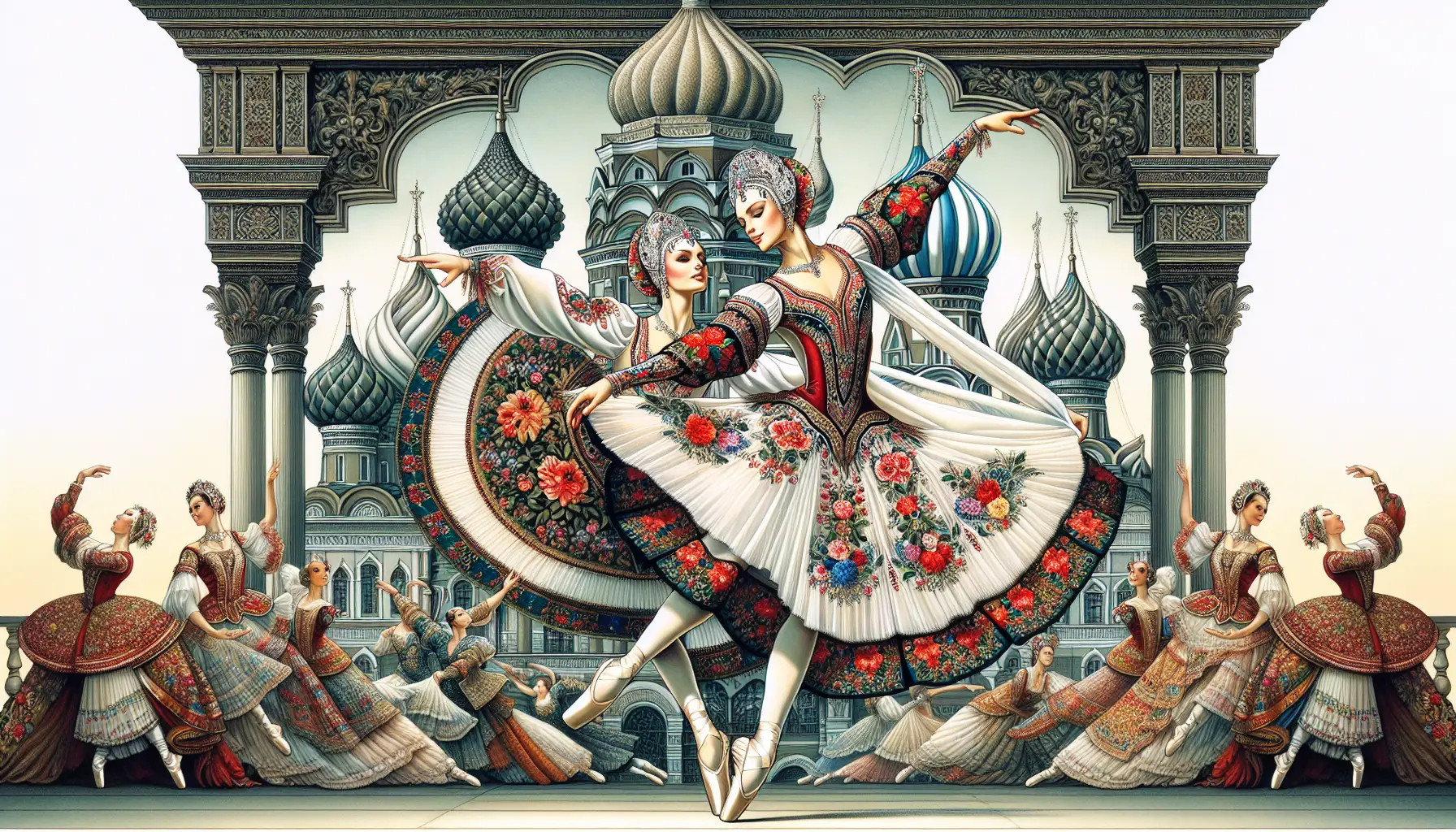
In the mid-to-late 1800s, ballet flourished in Russia, becoming integral to the cultural landscape. The Romantic Movement brought significant changes, including dancing en pointe and work becoming standard for ballerinas. Russian choreographers and dancers explored innovative movements and costumes, pushing the boundaries of classical ballet and setting new standards.
The Ballets Russes, founded by Sergei Diaghilev, played a crucial role in this evolution. The company’s controversial productions, such as The Rite of Spring, showcased groundbreaking choreography and design that profoundly influenced the ballet world. This era saw Russian ballet emerge as a dominant force worldwide, creating iconic works that remain influential today.
The Imperial Ballet School
Founded in the 18th century, the Imperial Ballet School played a crucial role in professionalizing ballet training in Russia. This prestigious institution became known for training many of Russia’s most renowned dancers, significantly influencing ballet globally.
The Imperial Ballet School’s rigorous training and high standards laid the foundation for the exceptional quality of Russian ballet.
Iconic Works: Swan Lake and The Nutcracker
Swan Lake and The Nutcracker are among Russia’s most iconic ballets, showcasing the pinnacle of classical ballet. Premiering in 1892, The Nutcracker became a holiday season staple and remains influential in the dance world.
These ballets exemplify Russia’s artistic and technical achievements in ballet, continuing to captivate audiences worldwide.
Neo-Classical and Modern Ballet
In the 20th century, he shifted from classical to neo-classical ballet, focusing on movement and emotion over traditional narratives. George Balanchine was pivotal in this transition, introducing the neoclassical style of ballet and fundamentally changing the perception and execution of ballet. His innovative choreography emphasized dance’s expressive power, setting a new standard for ballet.
The establishment of major American companies, such as the American Ballet Theater and New York City Ballet, marked ballet’s growth and acceptance in the U.S. These companies evolved dance by breaking traditional constraints and collaborating with contemporary choreographers to create unique performances that pushed the art’s boundaries.
George Balanchine and Neo-Classical Ballet
George Balanchine’s contributions to ballet history are immeasurable. Known for introducing a neo-classical style, Balanchine emphasized movement to express music and evoke emotions. His innovative choreography and techniques fundamentally changed ballet, making him a pivotal figure in the art form’s evolution.
Contemporary Ballet Companies
Modern ballet companies evolve the art form by integrating various dance styles and collaborating with innovative choreographers. This integration creates unique performances that break traditional constraints and push the boundaries of ballet.
These companies play a significant role in ballet’s ongoing development and diversification.
Ballet Costumes Through History

Ballet costumes have evolved significantly since the 15th century, reflecting dancers’ changing aesthetic and practical needs. Initially, dancers wore elaborate masks and headdresses that, while visually impressive, restricted movement.
Over time, costumes became more elaborate, and functional enhancements increased freedom of expression and the visual appeal of performances.
The Romantic Tutu
The introduction of the romantic tutu in the 19th century marked a significant change in ballet costume design. This calf-length, full tulle skirt allowed for greater expression in dance and enhanced the ethereal quality of romantic ballets.
The multi-layered skirt visually represented the lightness and grace of romantic movement, enabling dancers to convey emotion and narrative more clearly.
The Classical Tutu
By the late 19th century, the classical tutu emerged, representing another evolution in ballet costume design. This shorter, stiffer tutu allowed greater freedom of movement and highlighted ballet dancers’ technical prowess.
The classical tutu’s design enhanced ballet’s visual appeal, enabling dancers to execute intricate steps with precision and elegance.
Resume
Ballet has evolved remarkably from its origins in the 15th-century Italian Renaissance courts to its transformation into a global art form. Influenced by key figures such as Catherine de’ Medici and King Louis XIV, and shaped by institutions like the Académie Royale de Danse and the Imperial Ballet School, ballet has evolved into a disciplined and expressive performance art.
The contributions of choreographers like George Balanchine and the emergence of modern ballet companies continue to push the boundaries of this timeless art form. Ballet’s rich history and ongoing innovation ensure its enduring charm and cultural significance.
FAQ
How did pointe shoes emerge, and who first danced en pointe?
Pointe work appeared in the early 19th century. Italian dancer Amalia Brugnoli astonished audiences in 1823, but Marie Taglioni’s ethereal performance in La Sylphide (1832) made the technique fashionable. Early shoes were soft satin slippers lightly darned at the toes; decades of experimentation gradually produced the stiff box and shank supporting modern dancers.
How have ballet costumes evolved from court dress to today’s streamlined styles?
Sixteenth-century court ballets featured heavy brocade gowns and heeled shoes. By the Romantic era, Marie Taglioni’s calf-length romantic tutu of 1832 allowed freer movement, and by the late 19th century, the short, platter-style classical tutu showcased virtuoso footwork. In the 20th century, choreographers such as George Balanchine often replaced tutus with simple practice leotards to focus attention on pure movement.
When did women first perform professionally in ballet?
The first salaried female ballet star was Mlle de La Fontaine, who debuted at the Paris Opéra in 1681. Before her, female roles were danced by men; her success opened the stage to generations of ballerinas.
Why are the five basic foot positions so important?
Codified in 17th-century France, the five positions provide a neutral starting and finishing point for every classical step, ensuring clean lines, turnout, and balance. They function like an alphabet: master them and a dancer can “spell” any combination of movements.
How is choreography recorded and preserved?
Written dance-notation systems—beginning with Pierre Beauchamp’s 1700 Feuillet notation and later Labanotation and Benesh Movement Notation—translate movement into symbols on paper. Today, companies use a mix of notation, video, and digital 3-D capture to safeguard repertory.
What made the Ballets Russes so revolutionary?
Sergei Diaghilev’s Ballets Russes (1909–1929) fused daring choreography, modernist music, and avant-garde design by artists such as Picasso and Bakst. Its tours shattered classical conventions, inspired new stagecraft, and propelled ballet onto the 20th-century world stage.
How did George Balanchine shape American ballet?
Balanchine co-founded the New York City Ballet in 1948, introducing a speedier, plot-light neoclassical aesthetic. Stripped of elaborate scenery, his works emphasized musicality, long lines, and complex patterning, laying the foundation for an American ballet identity.
What distinguishes classical, Romantic, neoclassical, and contemporary ballet styles?
Classical ballet prizes symmetry, high lifts, and short tutus; Romantic ballet favors flowing skirts and supernatural themes; neoclassical ballet pares away narrative and décor; contemporary ballet blends classical technique with modern-dance torso work, floor contact, and non-traditional music.
How has modern dance influenced contemporary ballet?
Choreographers like William Forsythe and Alonzo King incorporate parallel feet, improvisation, and grounded weight-shifts borrowed from modern dance, expanding ballet’s movement vocabulary while retaining pointe work and turned-out positions.
What are the most common injuries ballet dancers face?
Repetitive jumps and pointe work place stress on the lower limbs, leading to ankle sprains, stress fractures, Achilles tendinitis, and patellofemoral knee pain. Strength training, cross-training, and adequate rest are key preventive strategies.
At what age do most professionals begin serious ballet training?
Children often start recreational classes around age 4–6, progress to structured syllabus work by 8–10, and commence daily pre-professional training in their early teens. Pointe work typically begins no earlier than age 11, when bones are sufficiently developed.
What does a ballet master or rehearsal director do?
This senior staff member teaches daily company class, runs rehearsals, coaches style and musicality, schedules casts, and maintains the choreographer’s intent, acting as the bridge between the artistic director and dancers.
Which international competitions launch young dancers’ careers?
The Prix de Lausanne in Switzerland and Youth America Grand Prix provide scholarships and company contracts to dancers aged 15–18, making them influential gateways to the professional world.
How are ballet productions financed today?
Ticket sales rarely cover costs; companies rely on a blend of philanthropy, corporate sponsorships, government arts grants, and special fundraising events. Diversified revenue streams help offset volatile box-office income.
What initiatives are broadening diversity in ballet?
Programs such as Misty Copeland’s Be Bold and nonprofits like Brown Girls Do Ballet provide tuition-free classes, mentorship, and supplies to under-represented communities, while major companies are reassessing casting, repertory, and recruitment practices.
How is technology changing the ballet stage?
Projection mapping, motion capture, and augmented-reality scenography immerse audiences in dynamic digital worlds—as seen in productions like Adrien M / Claire B’s Pixel—while AI-assisted choreographic tools allow creators to visualize complex group patterns.
How do composers and choreographers collaborate on new ballets?
Collaborations often begin with shared narrative concepts or musical sketches; composers adjust tempos and phrasing to fit movement, while choreographers mold steps around musical motifs, ensuring dance and score evolve into a cohesive work.
Why were male dancers so prominent in early ballet?
In 17th-century France, court etiquette considered public female performance improper, so aristocratic men—most famously Louis XIV—took leading roles. Their dominance waned after professional theatres opened to the public and women joined the ranks.



